Travelling to Zandvoort for the Dutch Grand Prix promised to cause headaches given what a bumper crowd for home Formula 1 hero Max Verstappen would do to the circuit’s existing transport…issues.
Maybe that’s why Verstappen started his back in January. And took the backroads, and a harbour, and a greenhouse. And the streets and beach in Den Haag?
Verstappen was meant to be the main attraction of the Dutch GP that never happened. But he still had a starring role to play on Sunday. Red Bull has released its most recent ‘road trip’, the latest in a long line of demonstration runs and projects that break the mould.
The idea? “It’s all madness,” says Arno Stols, the director.
Two title-winning Red Bulls (RB7 and RB8) and months of work were required to realise four days of filming in which Verstappen and team-mate Alex Albon travelled to Zandvoort via windmills in the small town of Maasland, shipping containers in Rotterdam, the Netherlands’ seat of government (The Hague) and Scheveningen beach.
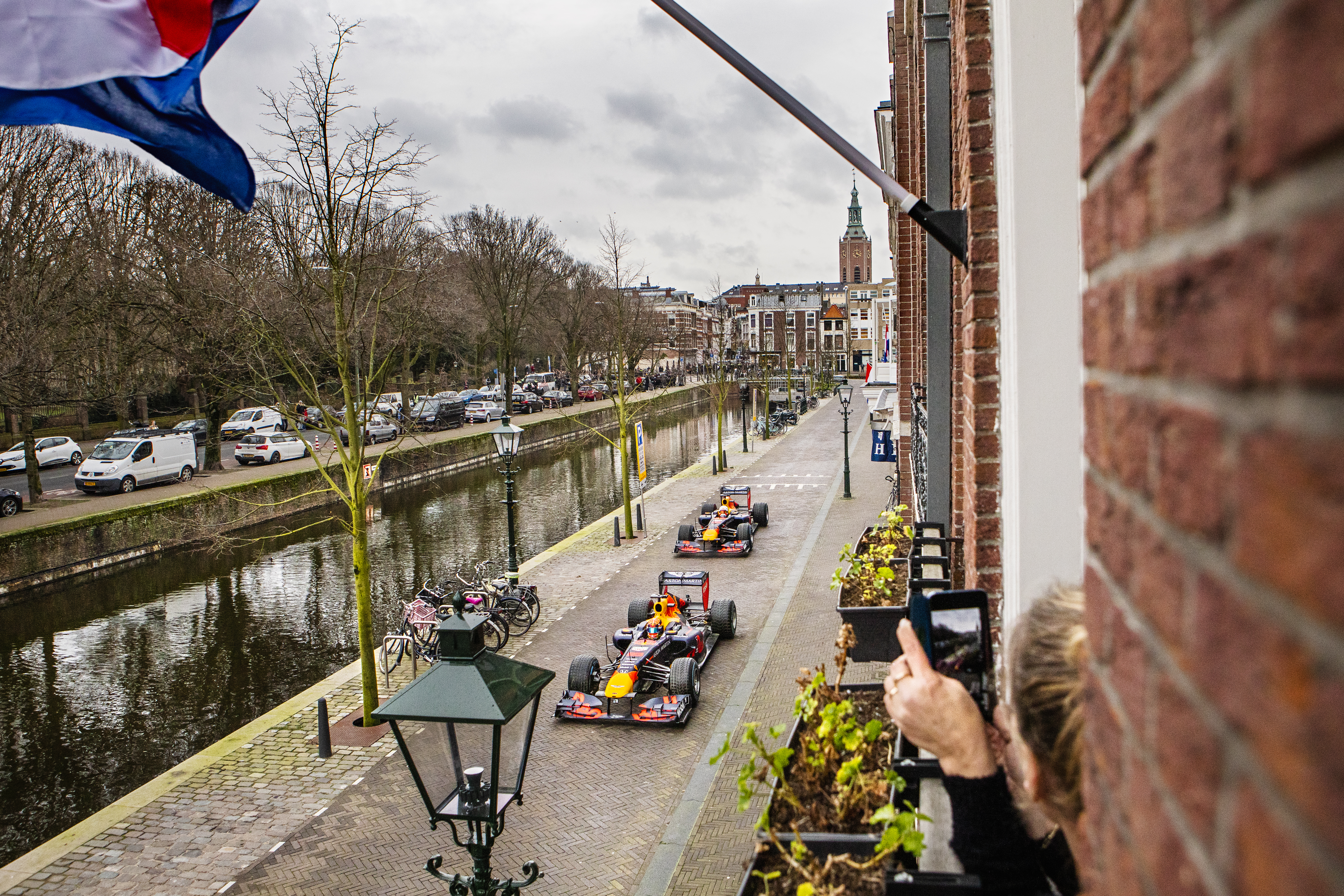
“With us not being able to race at the moment, to still put something out there for the fans was very cool,” says Verstappen. “To show a bit of this Dutch road trip we made, was something special again.
“Red Bull is the only one doing it, so that already makes it very special.
“Normally you only see us on a race track of course and sometimes somewhere else, but we do crazy stuff on the snow, on the beach.
“All that kind of stuff is of course a once in a lifetime opportunity.”
Those challenges emerged in Netherlands. Rumour of the filming project spread like wildfire among locals and when the team turned up to film among the windmills and flatlands of Maasland, large crowds needed to be moved and then carefully monitored.
Red Bull’s showcase events, or halo projects, or whatever you want to call them, often boil down to just a few stills or minutes of striking imagery and footage. The spectacular nature of the end product is designed to justify the effort.
“The shot through the greenhouse was the coolest shot,” says support team manager Tony Burrows, who manages the show car side of the Red Bull operation.
“We don’t normally see a Formula 1 car surrounded by flowers. The greenhouse is the size of a football pitch so it’s amazing to see.
“There’s going to be some great footage from there.”

You can judge that for yourself.
Static cameras, tracking cameras on cars and drones are all used to capture long sequences and multi-stage set-up shots. But not everything goes to plan with such grand ideas, and that goes for this one too.
Temperatures were just over zero in January and it was so cold that one of the starter motors broke, and then the back-up packed in.
Fortunately, a replacement was crafted in a make-shift workshop within 20 minutes. It’s not the first time one of these convoluted events has suffered a setback.
When Verstappen drove down the Kitzbuhel ski slope in 2016, Red Bull had to react quickly to a major problem.
“The first day we tried to run the car it just went nowhere,” remembers support team coordinate Mark Willis on an episode of Red Bull’s podcast from 2019. “We got about 20 feet out of the garage, and it sunk in the snow.
“Overnight they had some snowchains made locally and we spent the next night modifying the car to fit the snowchains: taking the brake ducts off, trimming the floor, doing stuff we wouldn’t normally do.”
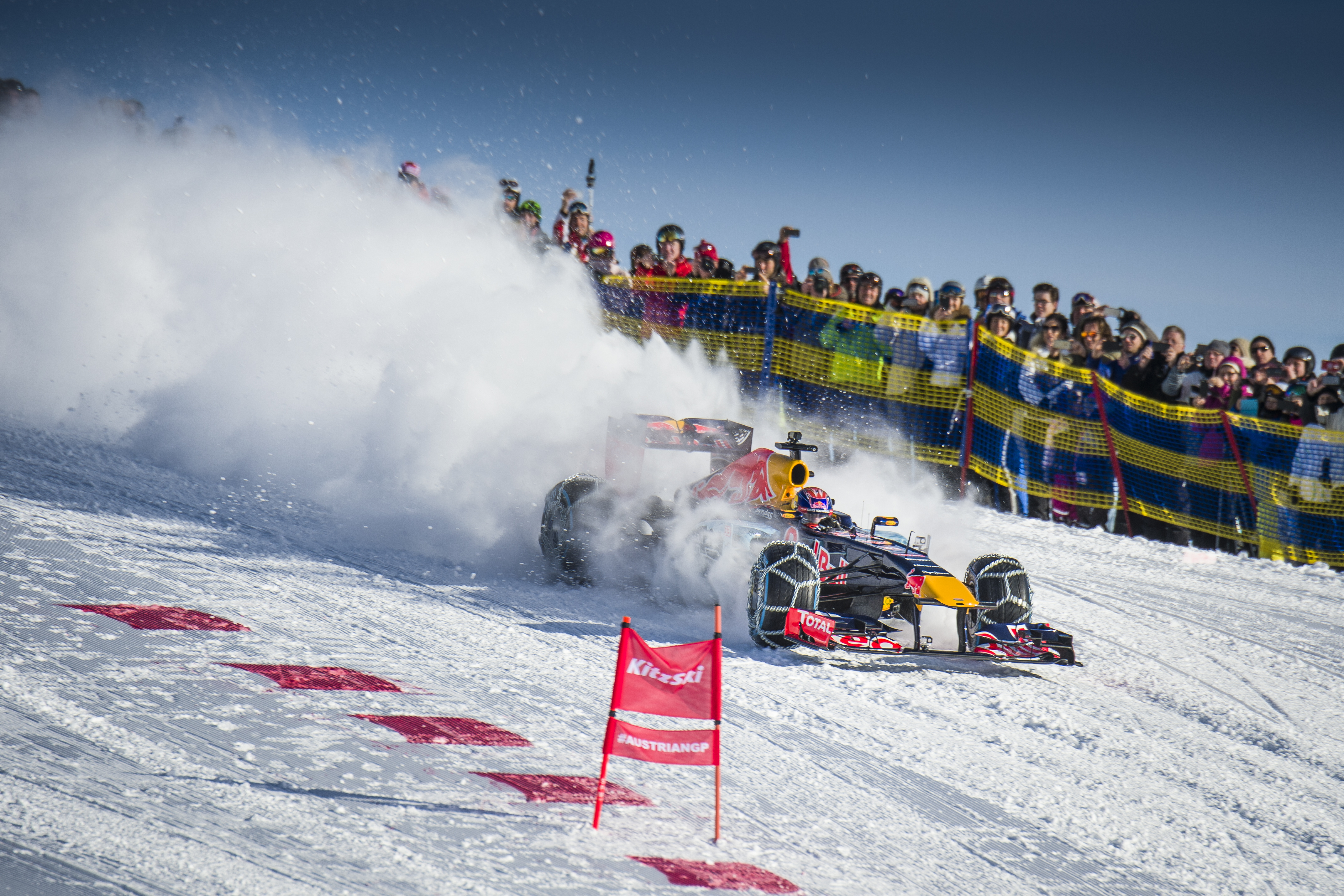
Fortunately, in 2011, a marshal escaped unhurt when they were hit by a car driven by Sebastien Buemi at a Japanese event. And there are other dramas too: David Coulthard was driving in Luxembourg one year when a small fire broke out.
“It’s not unusual at the day final demo,” Coulthard insists. “We can run the engine up to 120 degrees because it’s a pressurised system, the exhaust is getting incredibly hot at this point.
“So you do tend to get localised bodywork fires but they are sacrificial areas that are there to keep the demonstration going as long as you can.”
Red Bull’s events take in some extraordinary locations, from more than 18,000 feet high roads in the Himalayas to the Jordan desert, frozen lakes in Canada to the streets of Las Vegas.
There are major logistical challenges that come with that. But Burrows and Willis characterise weather and spectators as the two biggest obstacles to a successful run.
One of the arch-rivals of the Red Bull demonstration returned with a vengeance on the final day, though. A torrential downpour brought high winds and heavy rain to Zandvoort. More than 200 Verstappen fans braved the elements in the hope of witnessing some action
“Sometimes when spectators get a bit out of control you end up with army, police, everything trying to keep them in control,” says Burrows.
“We will never send a car unless we’re 100% sure not only the drivers not going the get hurt but the spectators are not going to get hurt.”
Those challenges emerged in Netherlands. Rumour of the filming project spread like wildfire among locals and when the team turned up to film among the windmills and flatlands of Maasland, large crowds needed to be moved and then carefully monitored.
Other scenes from the Dutch GP road trip encapsulate a variety of ‘usual’ problems on these kinds of events. When the cars are running behind a truck, limited to 90km/h, or even more slowly through the greenhouse (owned by an F1 fan!) they are well outside their comfort zone and can quickly overheat.
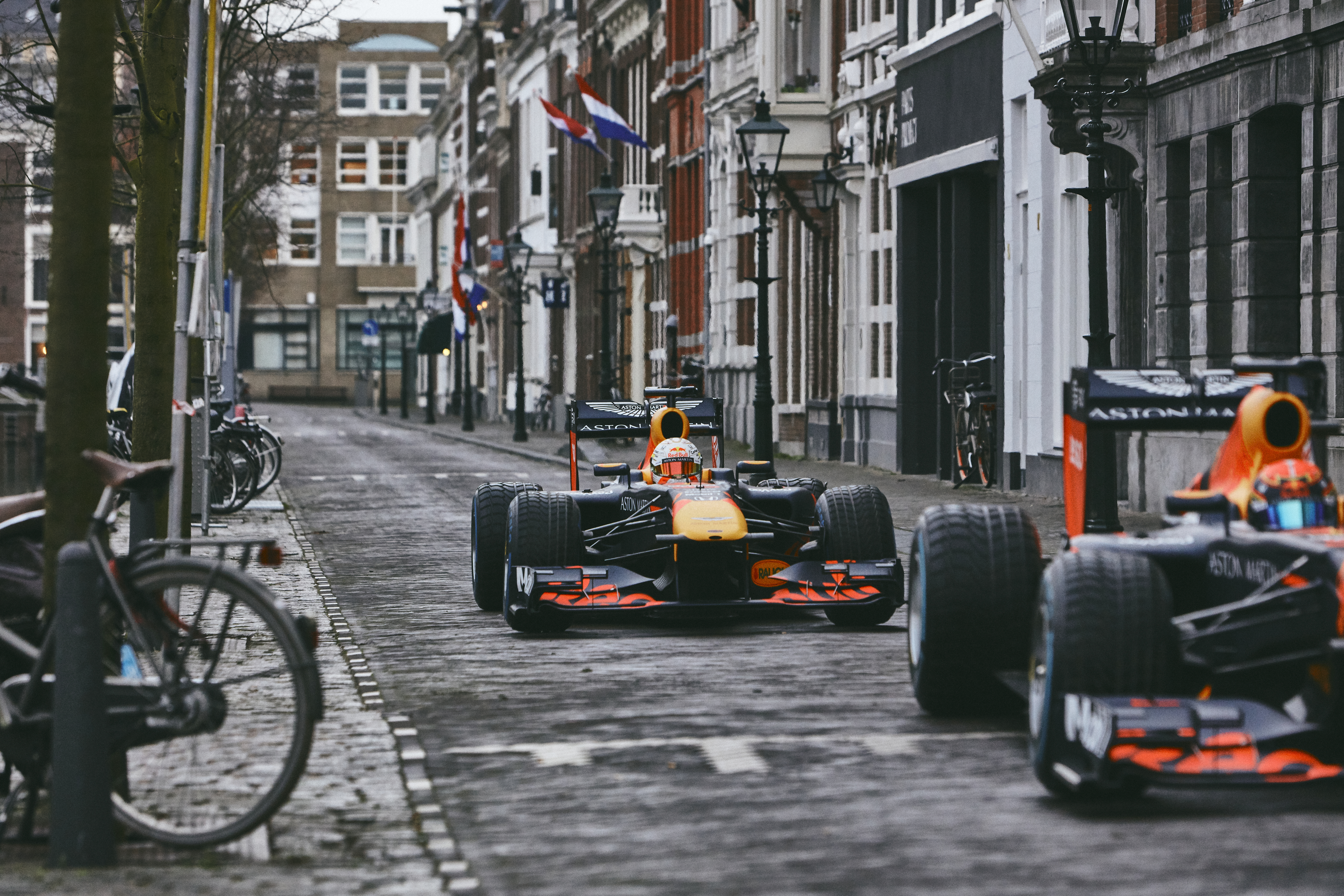
This is noticed more aggressively in desert runs or hot climates. In extreme conditions, Red Bull fits fans to the car as relying on air cooling is just not sufficient. Otherwise, the V8 engine holds up well: “They were a lot simpler than they are now,” says Burrows.
“The (modern engines) are so complex, the limits they are built to are so finite, you wouldn’t be able to run up a mountain without major changes.
“We’ve run in freezing cold and roasting hot temperatures, sand and duststorms. The V8 can handle everything.”
One of the elements of the Dutch road trip that was unique was the scene in which Verstappen and Albon have to drift their cars around a flower auction.
It was a live set, with flower carts being operated by auction house staff, and the drivers had to contend with a low-grip surface: a recipe for a major problem if there was any misstep.
No wonder director Stols admitted he was “a bit worried”. Fortunately, major drama was avoided, although Coulthard’s words from 2019 rung true: a very small localised fire started at the rear of the floor and was quickly extinguished.
There was also a potential gearbox problem detected: removing and cleaning the filters solved that and returned oil pressure to normal.
Day three took Red Bull to The Hague, and a reunion with former driver Robert Doornbos, who rode a bicycle past the cars as they made their way down the famed cobble streets. Then to the beach.
Increased ride height is important on such surfaces, and things like welding down manhole covers and checking for potholes are routine when it comes to street running. Although when Neel Jani drove the Khardung La mountain pass at more than 18,000 feet, the road was so potholed the the final few kilometres had to be abandoned.
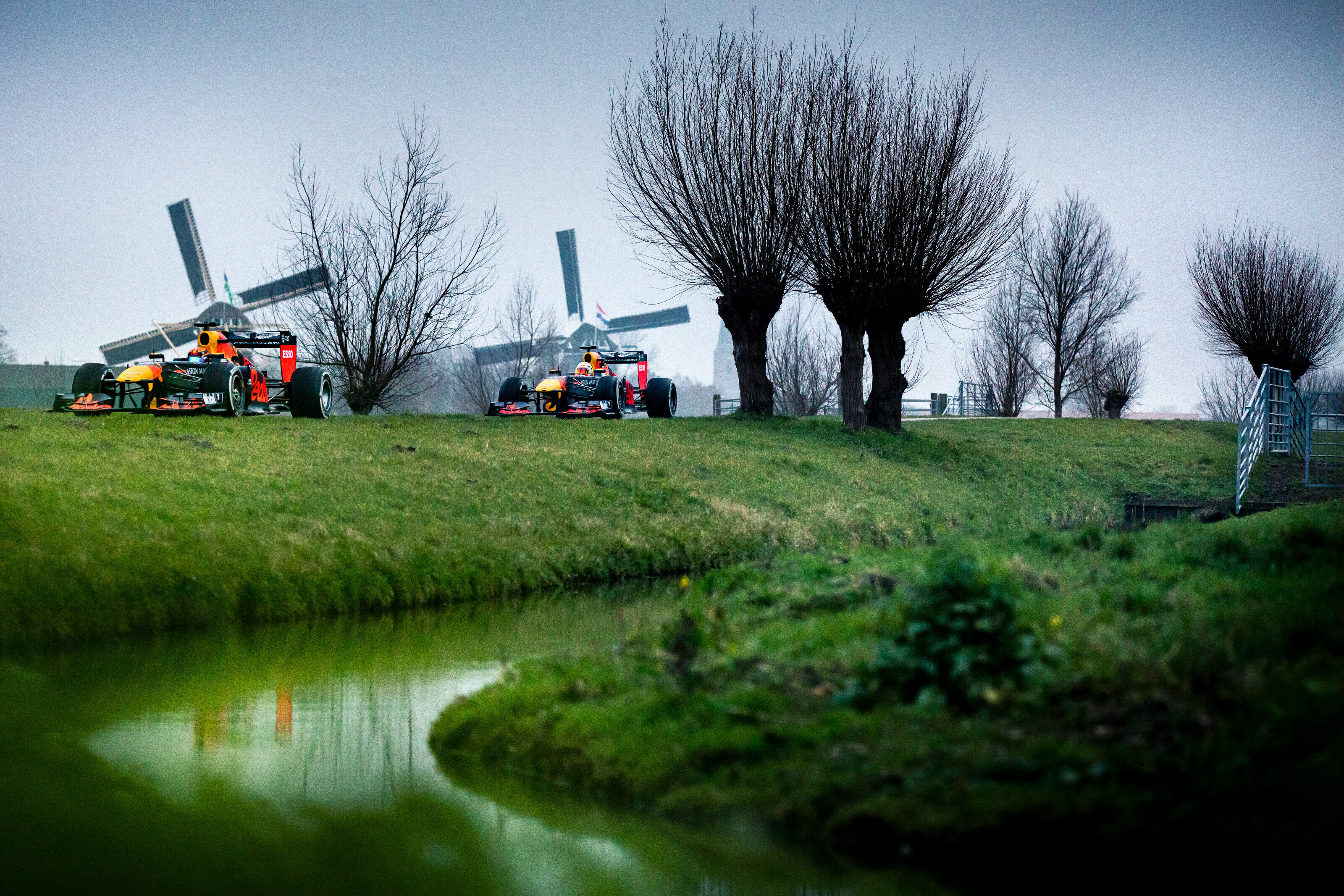
Fortunately, the streets of the Netherlands are in slightly better condition. But the beach comes with different challenges, depending on the type, from the car sucking up sand to the impact of the surface.
“You’d think it would be soft running on sand but it’s very abrasive,” says Burrows. “It’s like running sandpaper on the tyre, a couple of runs up and down and you’re down to the canvas and have to change the tyres again before they pop.”
But in the Netherlands, it was soft sand that proved the problem as the support vehicle got stuck…
For the shoot itself, the soft sand was a concern for 2018 MXGP world champion Jeffrey Herlings. The plan was for the motorbike rider to leap over the cars in one of the standout images from the entire video. But as a new jump had been constructed for this, he needed to be sure it was firm enough to do the jump properly. Fortunately, he was. Job done and scene secured.
“I don’t take it for granted how lucky we are to be given permissions to come to the countries and do the demos. Yes, there’s an element that it’s a marketing strategy for Red Bull, but in many ways, it’s a gift to the public of various countries we go to” :: David Coulthard
One of the arch-rivals of the Red Bull demonstration returned with a vengeance on the final day, though. A torrential downpour brought high winds and heavy rain to Zandvoort. More than 200 Verstappen fans braved the elements in the hope of witnessing some action, but it was not to be. The shoot was called off.
It wasn’t the first time and it’s unlikely to be the last. “We had to stop an event in Oman because of rain and storms,” remembers Willis. “We managed to get out to do one run, one donut, and had to stop because it wasn’t safe enough for the spectators.”
But the problem with weather striking a filming project is that it impacts continuity and the narrative.
“We don’t have an ending to our film at the moment,” Stols said at the time.
Filming had to be finished the following month, when fortunately the circuit’s redesign ahead of the 2020 GP had been complete – meaning the final scenes could be shot AND Verstappen’s first laps of the revised track recorded as well. The mammoth amount of footage, more than 10 terabytes’ worth, meant post-production took nearly 70 days.
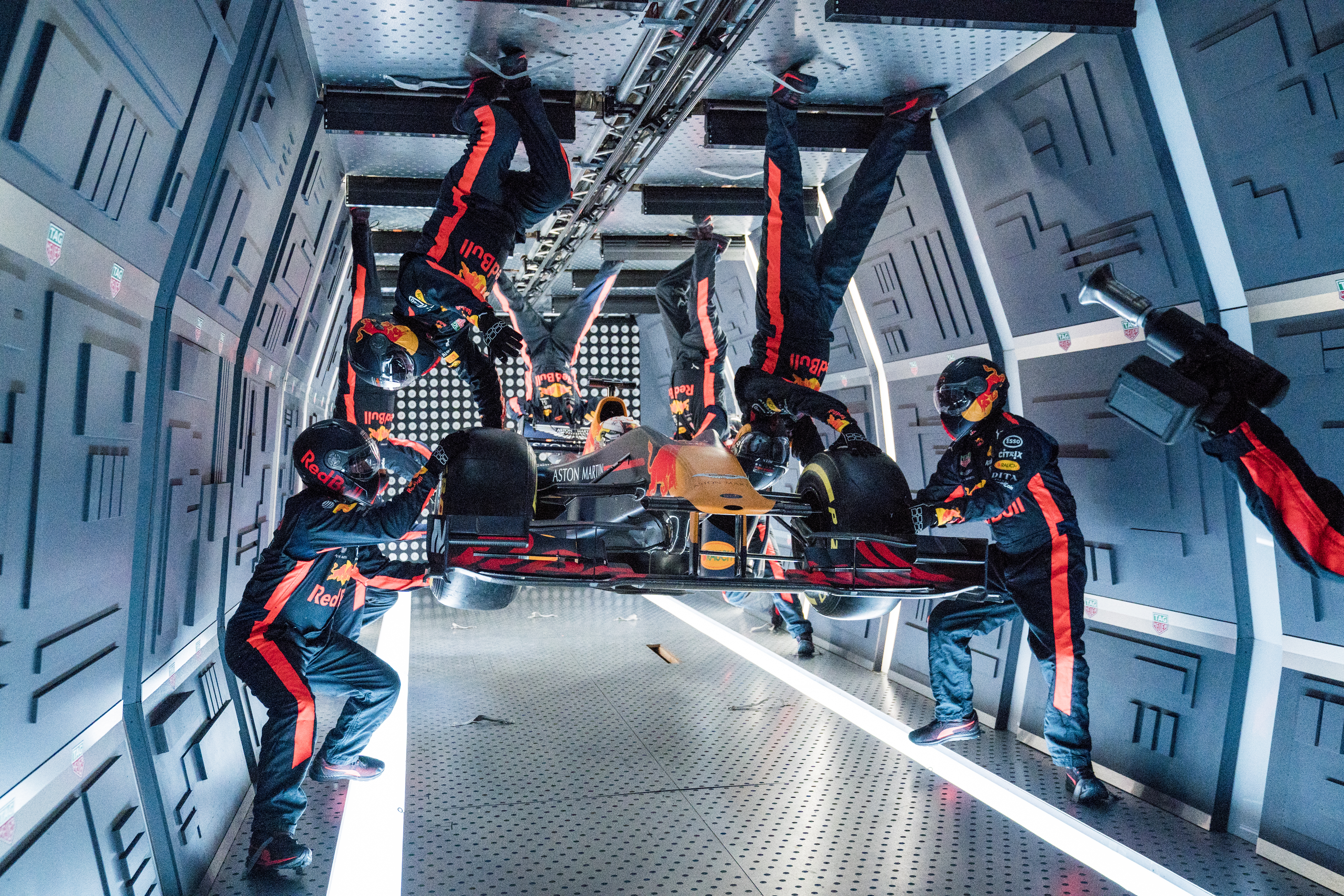
Each Red Bull show run, demonstration or special project comes with its own challenges, from the seemingly outrageous conditions of a zero gravity pitstop or Verstappen tackling a ski slope – “the first time he had to drive off the edge of the mountain down the bottom of the ski slope, I was hesitant about sending him,” admits Willis – to Jani running up the Himalayas, when Burrows recalls “everyone’s struggling to breathe, you’ve got oxygen bottles with you, and the engine’s barely keeping alive”.
But many will think of Coulthard doing donuts on the helipad of the Burj Al Arab hotel when they think of Red Bull putting an F1 car in crazy places.
A good chunk of Red Bull’s promotional activity is undertaken by Coulthard, a veteran of 71 grand prix starts with the team and who knows how many days behind the wheel of its show cars.
He’s travelled the world and performed everything from simple street demos to complicated cross-desert trips.
“I don’t take it for granted how lucky we are to be given permissions to come to the countries and do the demos,” Coulthard says. “Yes, there’s an element that it’s a marketing strategy for Red Bull, but in many ways, it’s a gift to the public of various countries we go to.
“We bring a Formula 1 car and put it right in the middle of their cities.”
Or even, as revealed on Sunday, their greenhouses.

